Dogs Eating Dirt
Why They Do It, What to Do About It
13 year old Nora and her 3 month old great-great grandniece, Maisy, eating from the "dirt dish" that Maisy started...they both got some bentonite clay in their dinners that night :)
Dogs eating dirt. It used to upset me a lot because I felt that something must be missing from their diet. As it turns out I was right. The thing that was missing was...dirt.
There are a lot of beneficial organisms in soil that are probably uniquely suited to colonizing the gut biome of dogs. Here is a good article that has a survey of the studies and a downloadable spreadsheet of links to the studies and a summary of each...this gal did a really nice job laying this out!
In my experience, puppies will almost always eat dirt, and adults will occasionally eat dirt. I have no study regarding this, but I assume the reason puppies feel more compelled to eat dirt is that they are still colonizing their gut biome.
Eating soil is not as weird as it might seem...in lots of places around the world, clay is a normal part of human diets.
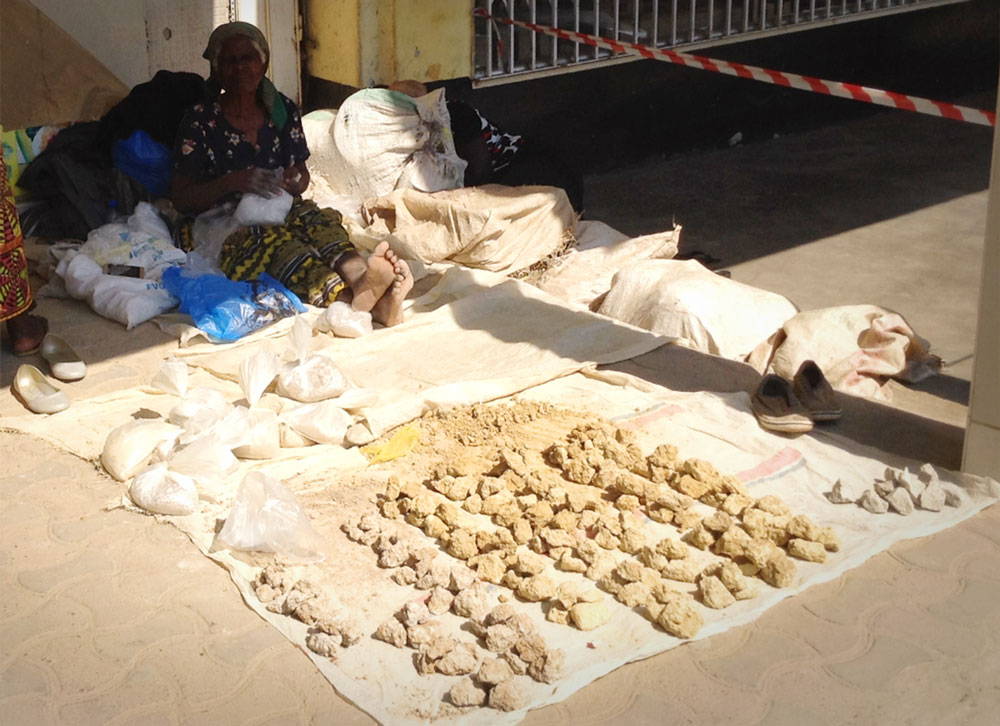
Edible clay for sale at a market in Zambia
Jcaravanos, CC BY-SA 4.0, via Wikimedia Commons
Is Eating Dirt Good for Dogs?
The jury is out on the advisability of soil-based probiotics (SBOs), at least for humans. The proponents of SBOs praise their ability to resist gut acid and re-colonize the gut. Opponents claim that SBOs represent a danger of overrunning the natural gut biome and becoming pathogenic.
I do find the claim that SBO resists stomach acid and therefor more effectively can colonize the gut very interesting, because the PH of a dog’s stomach can dip as low as battery acid during the digestion cycle. It’s possible (although not proven) that SBOs might resist this acidic environment and confer more probiotic benefits on dogs.
In my observation and experience, dirt-eating is an extremely common behavior in dogs, particularly young dogs, who are raised in enriching environments, have ample opportunity for social interaction, and do not display any other behavioral abnormalities. This suggests that dirt-eating is a beneficial adaptation and not a behavioral problem.
So SBOs might be a natural fit for dogs.
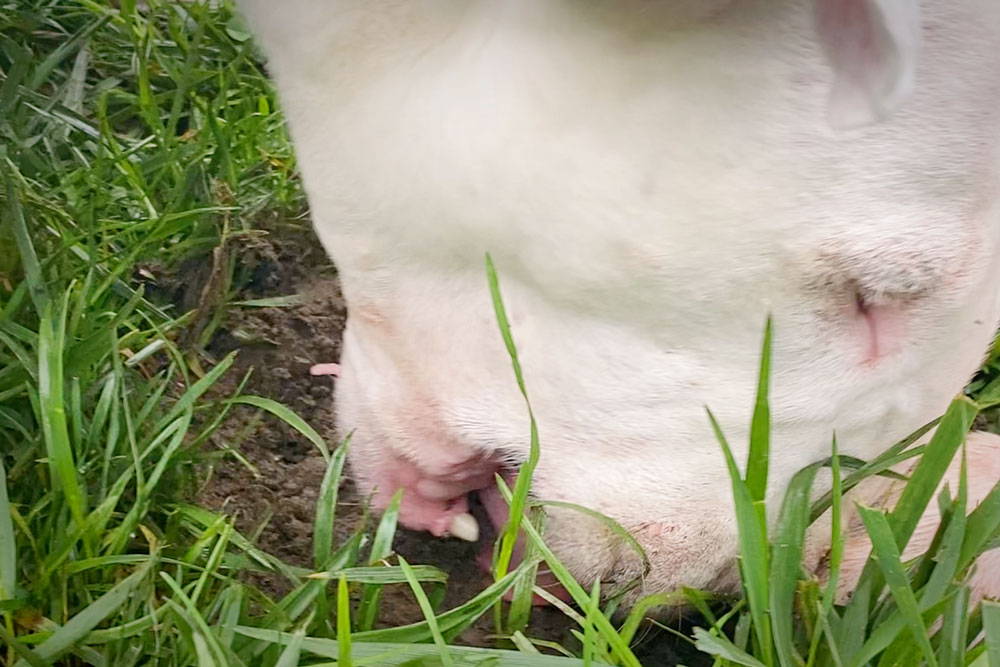
What Should You Do if Your Dog Eats Dirt?
I don't view dirt eating so much as a "problem" that has to be solved anymore. Dirt appears to be a natural part of a dog’s diet. But that having been said, there is a definite quality control issue with eating dirt. You really don’t know what kind of toxic run off or parasites they could be picking up.
To prevent dirt eating, I throw half a teaspoon of food-grade bentonite clay in all my dogs' food from time to time. I don’t feed it every day, but probably once a month. Feeding large amounts of clay over a long period can be harmful, but I have found that throwing some into my dogs’ dishes once a month usually prevents dirt eating.
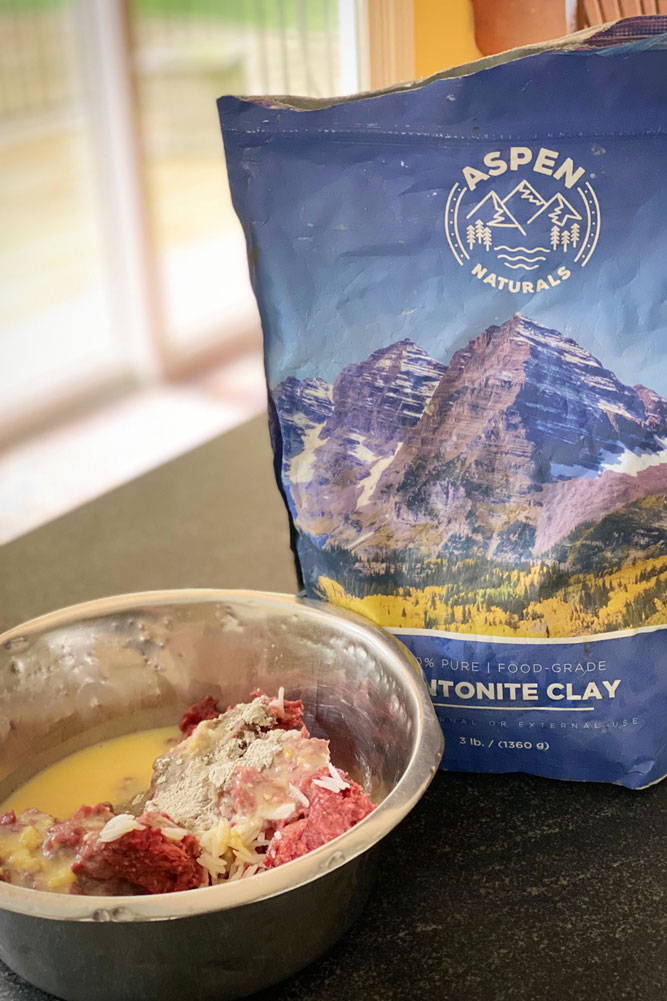
This is a brand of clay that we have used. I’m providing the link as a convenience for you. This is not an affiliate link - it’s just a product we have used in the past and liked. Please do your own research because products change!
If I do see a dog or puppy eating dirt, they get dosed with a half-teaspoon of bentonite clay each day for a week. I have found that this stops the dirt eating almost immediately.
For a point of reference, our dogs weigh 55-75 pounds. For a smaller dog I would use much less and a larger dog might need more. Occasional use of small doses of nutritional clay has no reported side effects so you can play around with dosing until you feel comfortable with the results.
Again, this is not a “more is better” situation. Occasional small doses of nutritional clay can have great probiotic properties and provide important trace nutrients. But large doses of clay over time can bind up other necessary nutrients and cause health disorders. So, moderation is key.
Do your dogs eat dirt? If you try adding nutritional clay to their diet, let us know how it worked for you - did it stop the dirt eating?

For further reading and citations to the studies and findings mentioned in this article:
Lucy Mailing, PhD (2001): The Complete Guide to Soil-Based Probiotics
Available at: www.lucymailing.com
Wikipedia.org (last edit Jan-2023): Geophagia
Available at: en.wikipedia.org
Jcaravanos, CC BY-SA 4.0, via Wikimedia Commons (last edit Jun-2016): Geophagic Rocks
Available at: commons.wikimedia.org
Marianne Smeets-Peeters, Tim Watson, Mans Minekus and Robert Havenaar (1998): Review of the Physiology of the Canine Digestive Tract Related to the Development of In Vitro Systems
Available at: www.cambridge.org
W. Nelson Beyer, Erin E. Connor and Sarah Gerould (1994): Estimates of Soil Ingestion by Wildlife
Available at: www.jstor.org
Megan Jula (2017):
The Ancient Andean Tradition of Eating Clay May Have Helped to Protect Health
Available at: www.npr.org
Russell M. Reid (2010): Cultural and Medical Perspectives on Geophagia
Available at: www.tandfonline.com
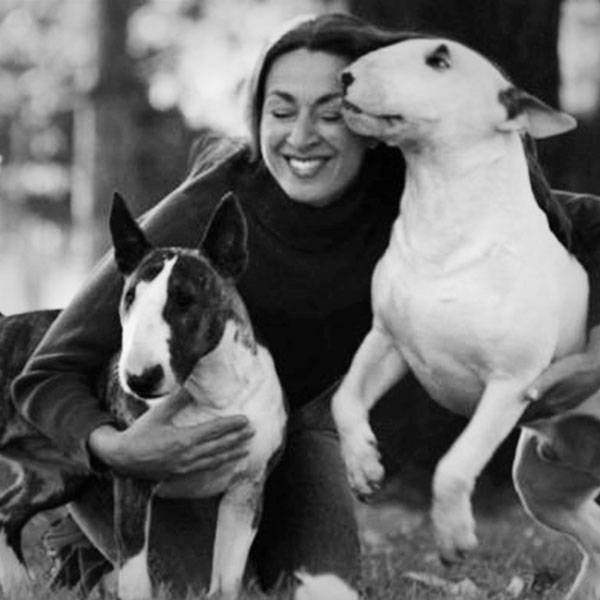
About the Author
Jane Messineo Lindquist (Killion) is the director of "Puppy Culture the Powerful First Twelve Weeks That Can Shape Your Puppies' Future" as well as the author of "When Pigs Fly: Training Success With Impossible Dogs" and founder of Madcap University.
Jane has had Bull Terriers since 1982 and she and her husband, Mark Lindquist, breed Bull Terriers under the Madcap kennel name.
Her interests include dog shows, dog agility, gardening, and any cocktail that involves an infused simple syrup.

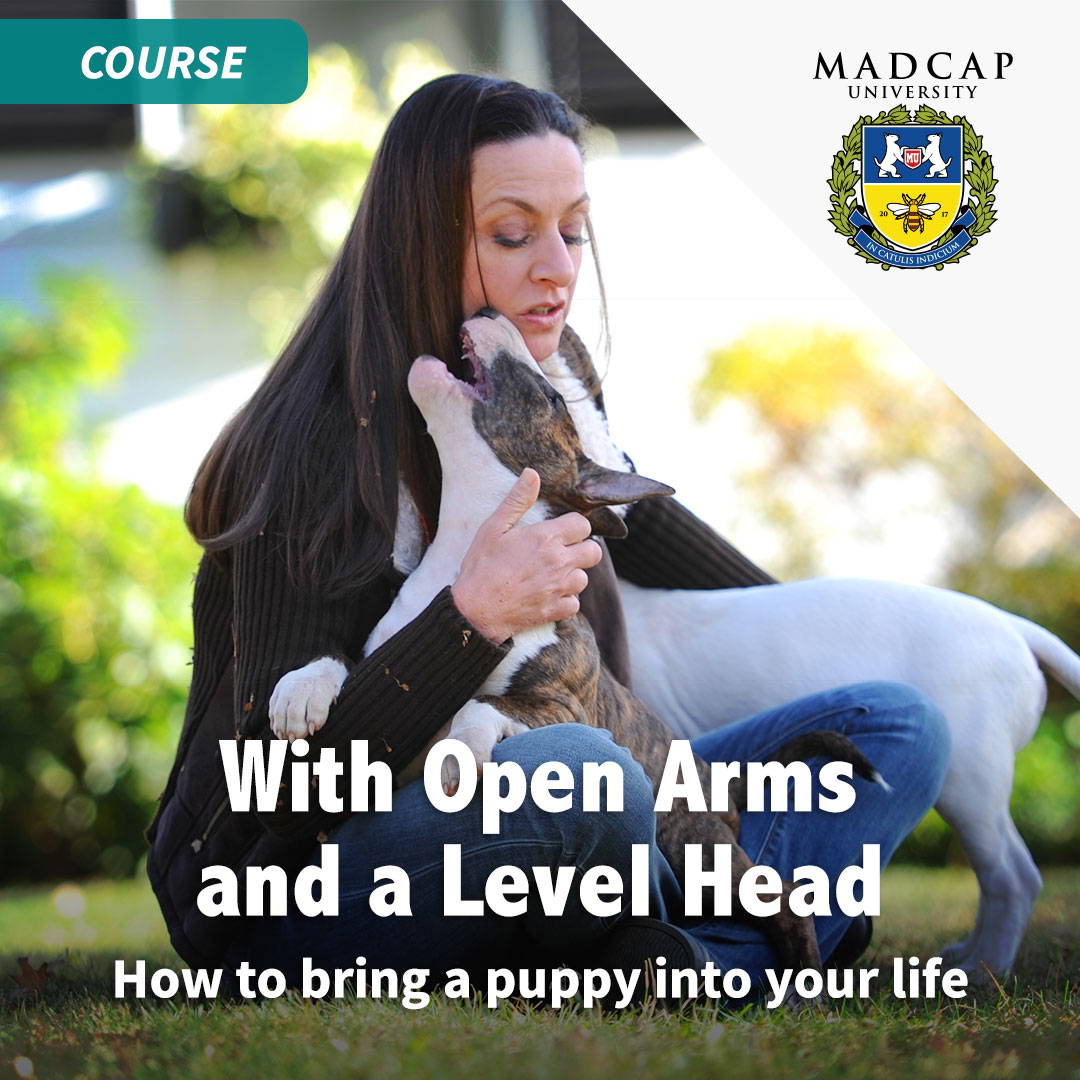
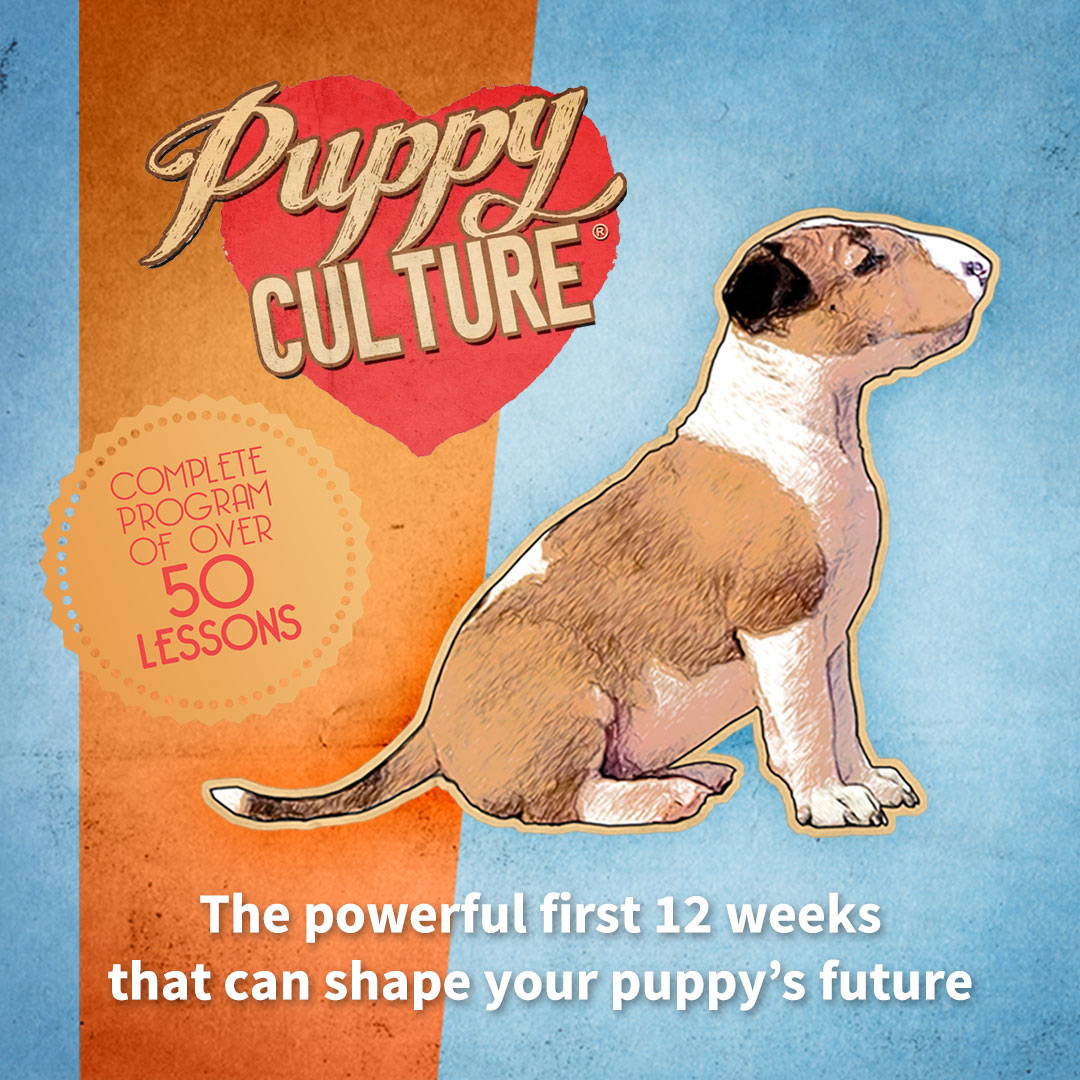
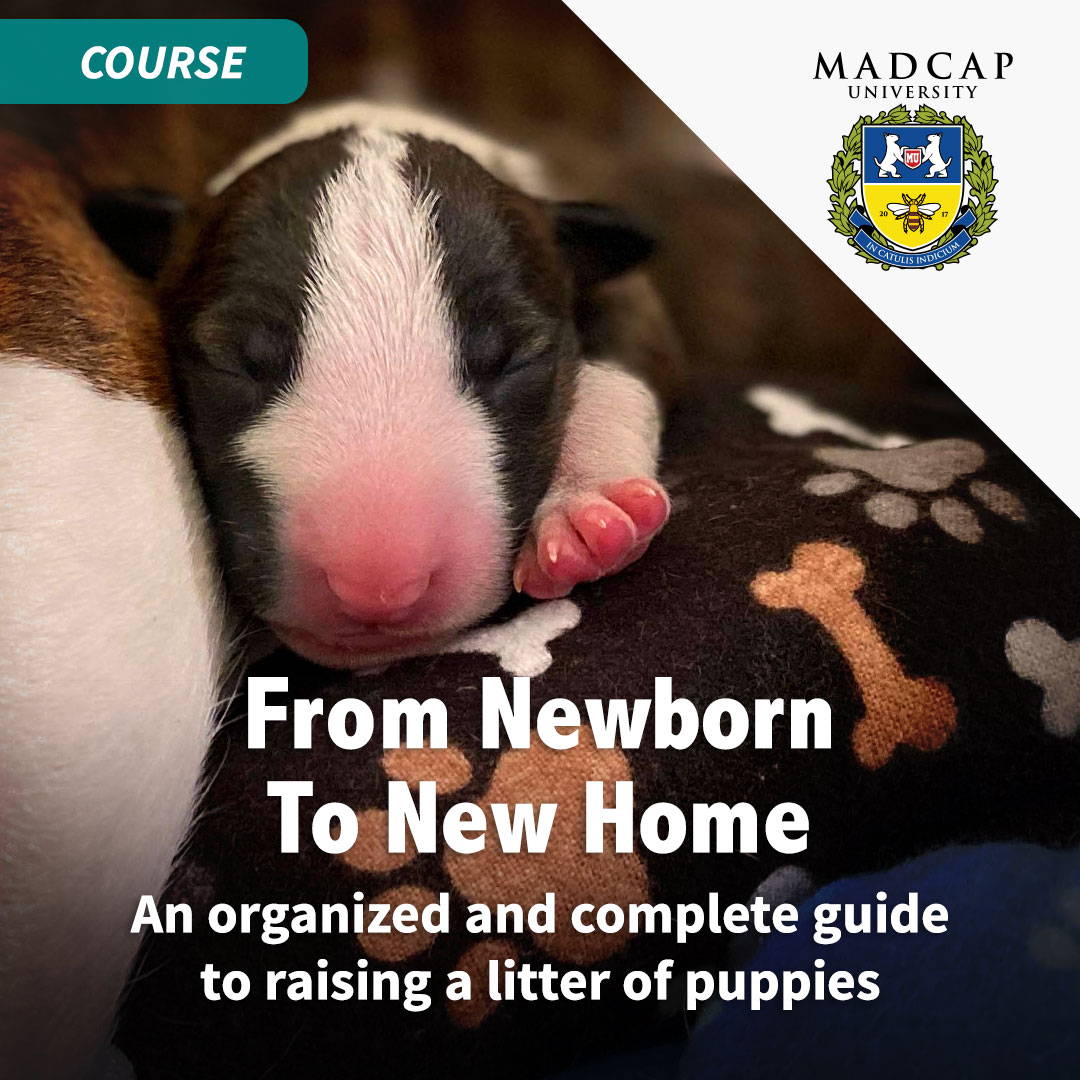
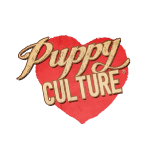
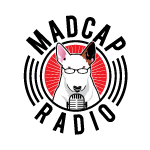
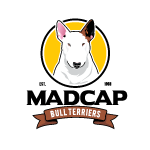
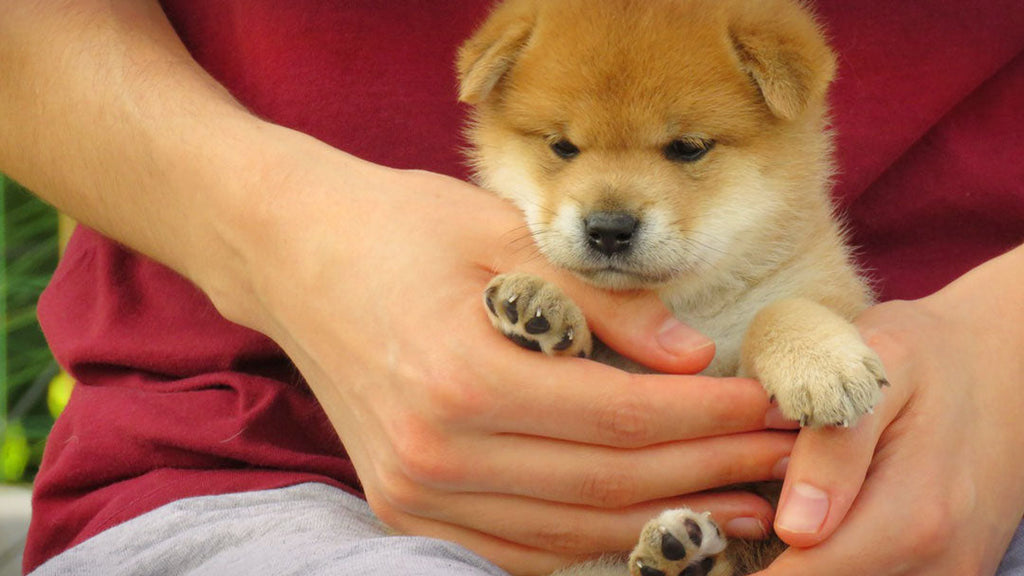

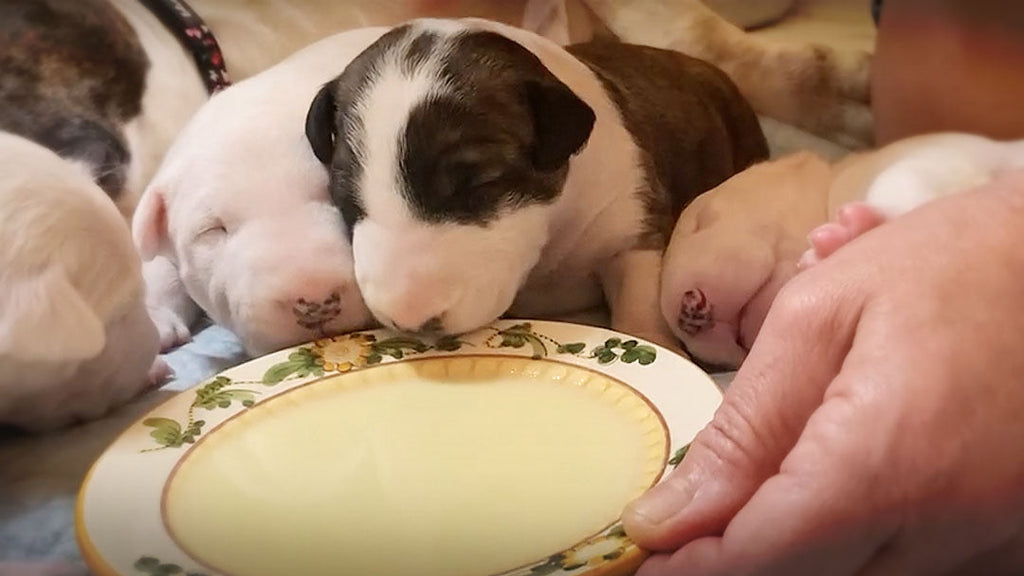
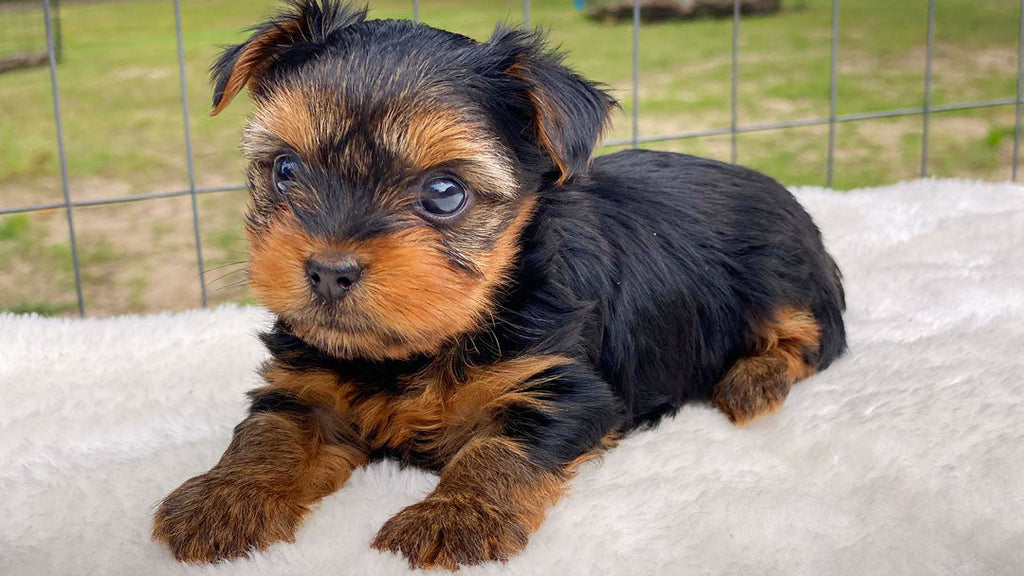
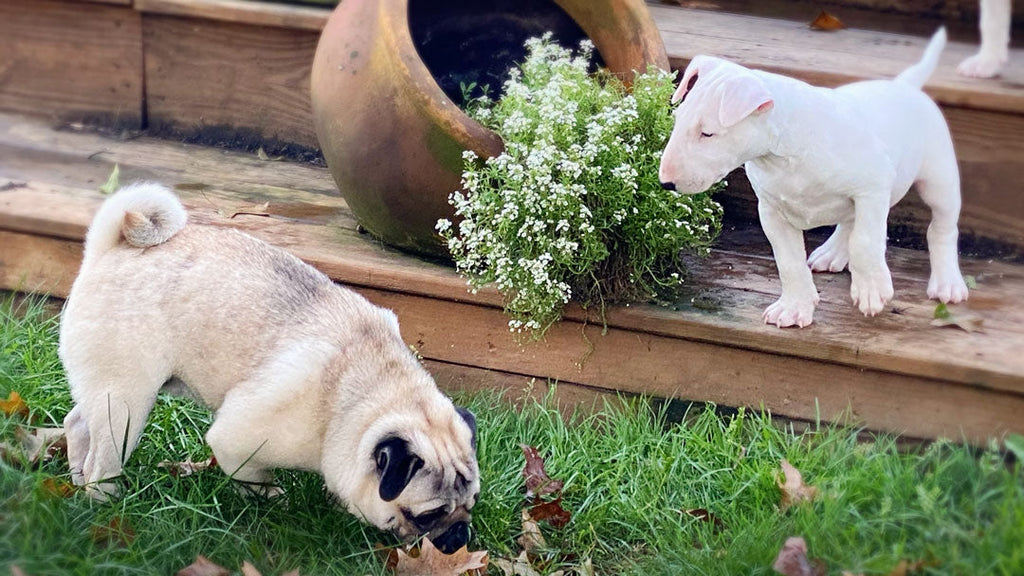
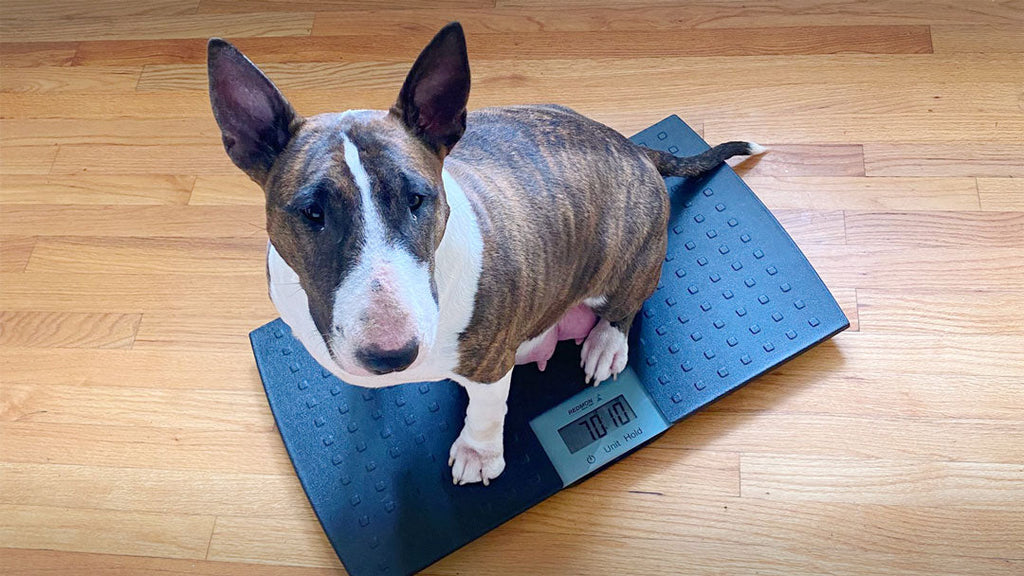

3 comments
Hello. I have a pair of Cane Corso puppies from a litter of 8 born in Dec 2022. The two boys are avid consumers of dirt from my very fecund, pesticide/herbicide-free (organic) garden. They’re now almost 18 weeks, and in robust health. Normally feeding them NutriSource Large Breed Puppy kibble, usually with carrot shavings and small cubes of watermelon.
Hi, interesting. I wonder if you tried this clay if you would have better results…it’s specifically developed for pets and has a slightly different form of clay https://www.chewy.com/rx-vitamins-rx-clay-powder-digestive/dp/186059
Thank you for this article, all of my dogs (toy breed) do eat dirt and I have tried the bentonite but it didn’t stop them, they are fed raw and get probiotics on a daily base as well. Yearly floatation for worms is being done which are all clear